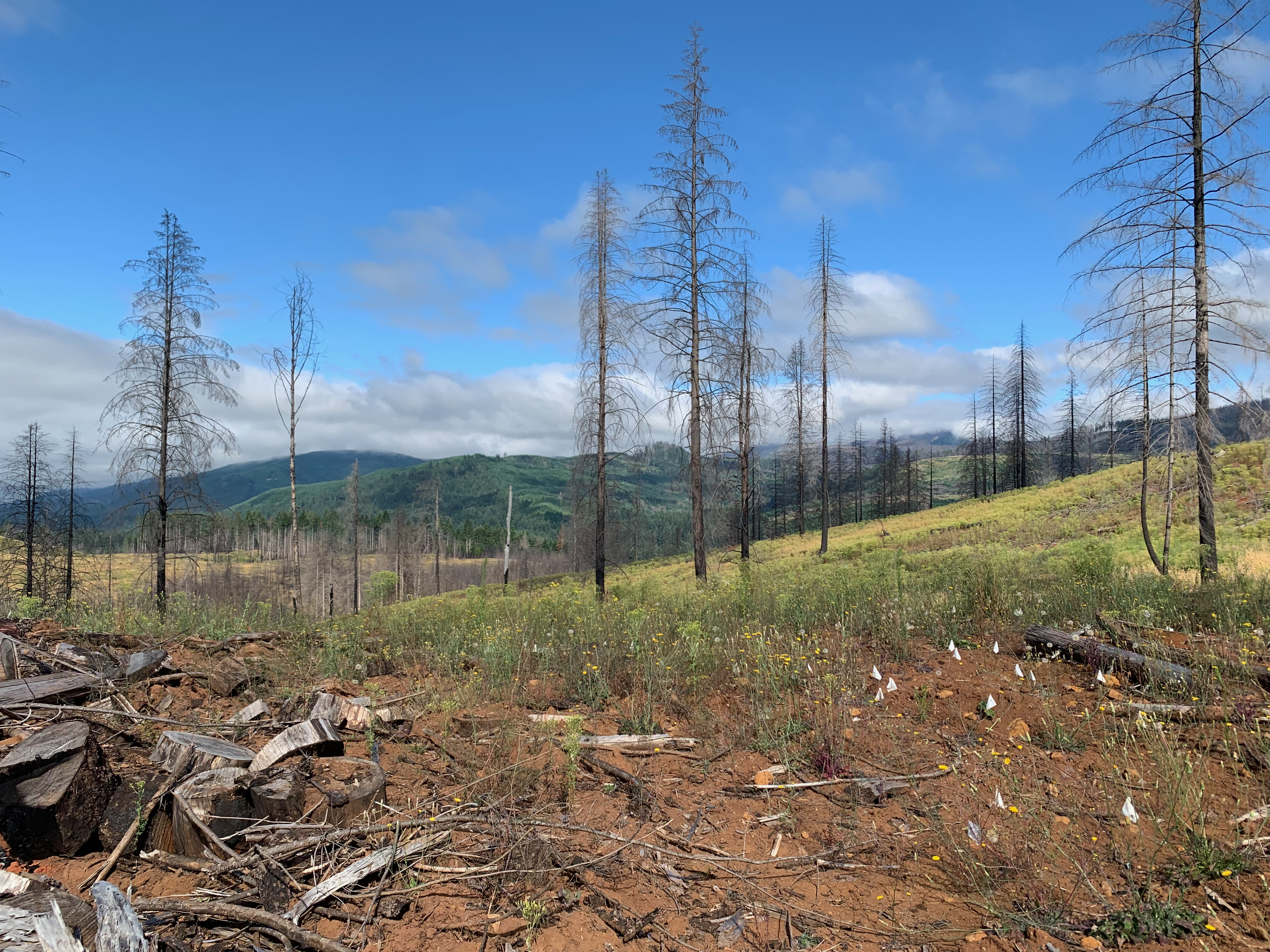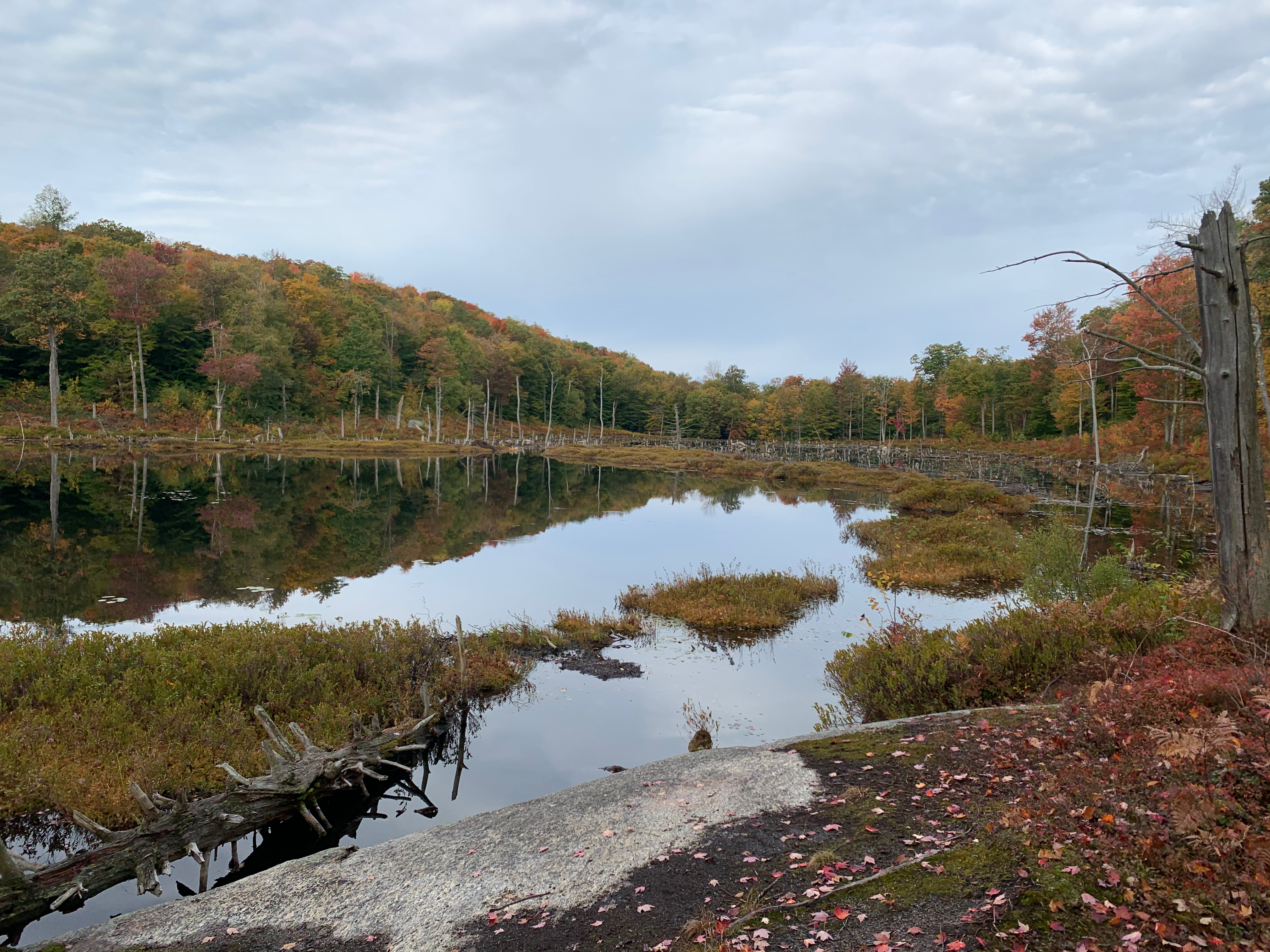
Jeremy A. Collings
Ph.D candidate at the University of Oregon's Institute of Ecology and Evolution
Howdy! This is my personal website where I hope to display some of my current and past work.
Broadly, I'm interested in employing quantitative methods and ecological intuition to solve messy problems. I've worked in a variety of systems, studying how populations and communities vary across space and time. I love collaborating and chatting about the philosophy and practice of quantifying ecological processes, so please reach out if anything on this page is of interst to you. I'm wrapping up my PhD in 2025 and will be looking for postdoctoral opportunities.


Here is a list of my current and previous research projects.
Recent theoretical and empirical work has employed a Modern Coexistence Theory framework to study plant-soil feedbacks. While this has provided novel insights into the role of plant-microbe interactions in mediated plant community structure, these models have neglected the ubiquitous context-dependency of plant-microbe interactions. Building upon the advancements of Ke & Wan (2020), we have developed a set of models that scale key parameters in plant-soil feedbacks by some set of environmental variables. This allows us to calculate the microbe-dependent competition coefficients across and environmental gradient and assess how the interaction between microbes and the environment influence niche differences, fitness inequalities, and the overall outcome of competitive interactions. This work is currently in review in Ecology, but feel free to contact me for a preprint or check out the repo on GitHub.
To parameterize the models described above, I have conducted a greenhouse experiment testing all pairwise interactions between five native annual plants from the uplan prairies in the Willamette Valley under control and drought treatments. In this two-phase experiment, I first cultured the microbial communities associated with each species at low and high densities and in control and drought treatments. I then grew focal plants under a variety of competition treatments in sterilized and inoculated soil in addition to the drought treatment. Using new methods in coexistence theory, I am actively exploring how drought and microbes interactively influence both pairwise and multispecies plant community dynamics.
To more mechanistically understand how context-dependent plant-microbe interactions mediate plant coexistence, I have worked with two fantastic undergraduate students to design and implement more targeted experiments. Macy Patel (B.Sc. Environmental Science, 2023) explored how nitrogen abundance shifts interactions between rhizobia and their host plants, and how this ultimately leads to altered competitive dynamics between legumes and non-leguminous plants. Austyn Tavernier (B.Sc. Environmental Science, 2024) conducted an experiment to better understand how mycorrhizae mediate plants' individual and community level responses to drought. The results of both of these studies are actively being written up for publication.
It is well established that many species of plants culture a particular community of soil microbes, often referred to as the microbial signature. However, very little research has explored the explicit role of this microbial signature in mediating species coexistence. We have paired a competitive arena experiment with fungal community sequencing to assess the role of plant species' microbial signature on the outcome of competition. From this experiment, we have fit population models for these species and related key metrics determining coexistence to species differences in their mycobiomes. This work is currently accepted in Journal of Ecology.
Using longterm data from the H.J. Andrews LTER & ForestGEO plots, I am developing a series of vital rate models for each tree species to better understand the fundamental ecological processes which govern forest dynamics. Stay tuned!
In a series of projects led by Dr. Jared Wolfe, I have used mark recapture data from research stations across Central and South America to estimate the impact of global change drivers on passerine demographic parameters. By applying Bayesian hierarchical modeling, I have been able to estimate parameters from tradition mark-recapture models, quantifying general and species-specific responses to stressors. Some of this work is currently in review, and we are continuing to expand this work to new datasets and new questions regarding tropical bird population dynamics. Stay tuned or check out one of the Github repos!
The Sorte Lab is working on an NSF funded project exploring the drivers and consequences of whelk range expansions. I am currently building vital rate models for two of these species to understand the demographic mechanisms underlying these range expansions. Ultimately, we hope to build up population models that may enable us to predict whelk population dynamics across their historical and expanded range in light of changing climates. For a taste of the sort of work involved, check out the in progress GitHub repo.
Although a large quanitity of resources are devoted to the management of invasive plants, there is relatively little empirical assessment of management success. As part of a larger effort to assess the management of the invasive plant Vincetoxicum rossicum, and in partenrship with the NY State Parks, I conducted a series of vegetation surveys in managed and unmanaged areas to evalaute the degree to which native plant species recovered post management. Acknowledging that invasive plants are only one of many stressors on native plant communities, we also employed deer exclosures and sampled for invasive earthworms. We found that deer exclosures significantly altered native plant community composition, and earthworm abundance was correlated with decreased diversity of native plants. Counter to expectations, we also found that managed plots did not change in native plant diversity over time, but unmanaged plots increased in native diveristy.
As part of my ESA SPUR fellowship, I worked at the South Llano River Field Station conducting a research project on the effects of deer on native plant communities. I used existing deer exclosures to conduct vegetation surveys in and outisde of exclosed areas. I also assessed standing crop biomass and harvested roots from select native species to assess the rate of colonization by mycorrhizal fungi. Although I found compositional shifts and decreased diversity outside of deer exclosures, I found no differences in the colonization of plant roots by mycorrhizal fungi.